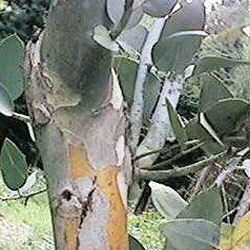Our Garden is not huge, a good size by British standards but small by U.S. standards from what I can gather. If you do have a good sized plot, regardless of where you are, read on, you may never need to buy firewood again.
We’ve been looking into hedging, fast growing, good looking and in need of little maintenance, and, I believe I have found the idea tree that also has the advantage of making excellent firewood.
Eucalyptus is in my opinion the best multi-functional tree out there.
Now to say that eucalyptus is fast growing is an understatement, it grows astonishingly fast, between 6 and 8 feet a year for the most common varieties. It is also excellent for growing into hedges, mosquitos and bugs hate them and they respond exceptionally well to coppicing, sprouting again and often putting on 12 feet in the two years following their cut to just a foot above ground level.
It’s recommended that you grow the trees quite close together to form your hedge, and in year two, or when the trunk is two inches in diameter, cut every other tree to a foot tall, just trimming the others to the required height. this cutting allows good strong trunks to build up, which makes not only a fine hedge but excellent firewood.
For the first five years the trunks are nothing much, just a few inches in diameter, but repeated cutting back will see them thicken up, and the uncut ones maintain your hedge.
Eucalyptus should be planted small, once they are potbound, as anything much over a foot tall will be, they can take several years to recover and will not grow with the vigour they should. Small, weedy looking eucalyptus will grow very well once in the ground. In Pots anything except the smallest plants will develop a spiral root system, and although they will still grow, their growth will be less vigorous and the spiral roots will persist, making them much less stable as they grow tall.
Eucalyptus are one of the few plant families where the hardiness of the off-spring is dependant not only on the species, but also on the hardiness and geographical location of the parent plant. So, for example, if you collect seed from a Eucalyptus gunnii growing on the edge of the desert, the plants produced are unlikely to survive our British winters. However, seed of Eucalyptus gunnii collected from trees high in the mountains near the snow line, will be extremely hardy, and will survive down to -20°C.
Eucalyptus trees need to sway in the breeze to strengthen their trunks and therefore it’s best not to stake them into the ground.
Allowed to grow up taller than a hedge, but not to it’s 100ft full height a eucalyptus will provide dappled shade for veggies and fruits in very hot areas.
Buying the young plants from a nursery who has raised them in a hat dry climate will maximise their chance of survival.
Although thought of as a ‘hot country’ tree that’s not the case in reality. They grow across a very, very diverse range of conditions and is one to explore as a multi-functional item in the garden. Firewood,screening,medicinal and shade, what more can you ask from a tree?
Take Care
Liz


How many would you need to grow for firewood? Do you water and fertilize them?